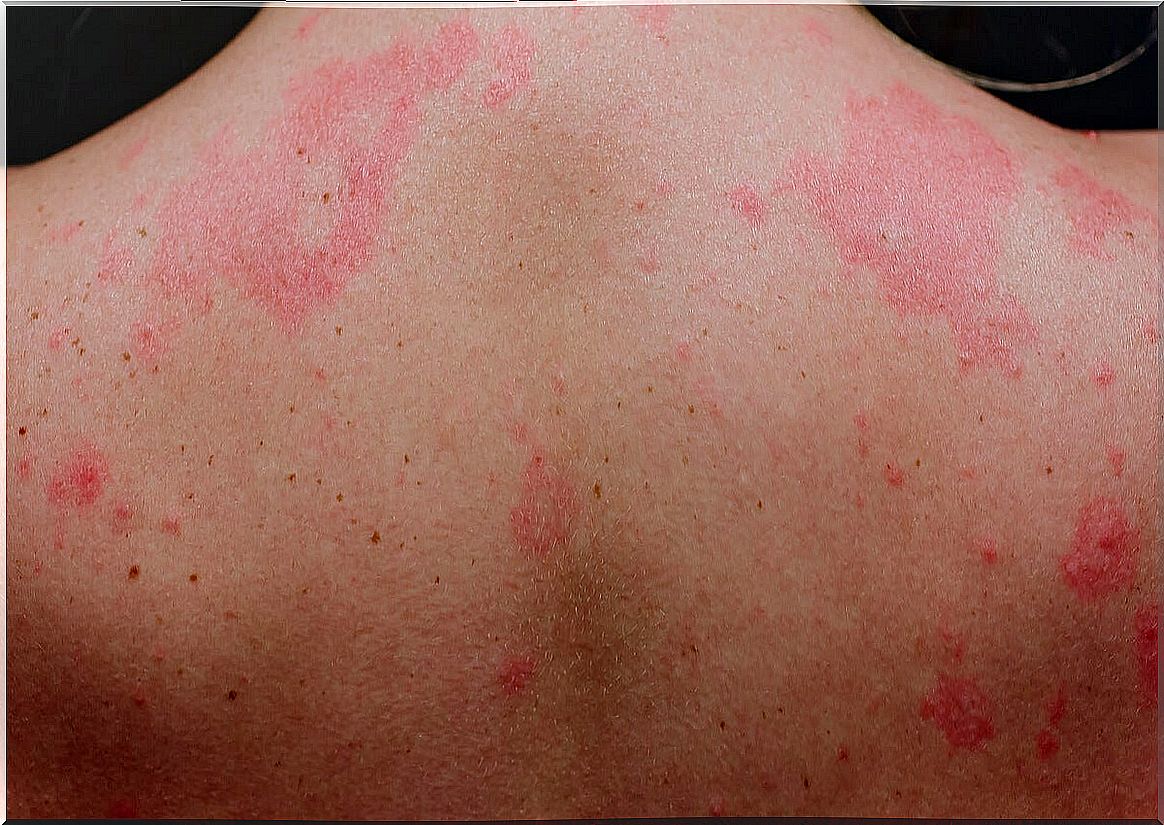Types Of Chronic Urticaria
Chronic urticaria is a skin disease characterized by the appearance of skin lesions that has different types of presentation. These wounds are usually accompanied by itching, or what is the same, intense itching in the affected area. According to various studies, it is estimated that 20% of the global population has suffered it at least once in their life.
Due to its high prevalence and the discomfort of its clinical picture, it is essential to know the causes, types and epidemiology of urticaria to deal with it effectively. Here we will focus on its chronic form.
Context and frequency of the disease
Before addressing the particularities of any disease, it is of special interest to know what are the presentation dynamics that it follows over time. It is one of the first steps necessary to plan its treatment and containment.
An article in the Buenos Aires Medical Journal provides some very interesting facts about urticaria:
- It is estimated that 15 to 25% of the world’s population suffer from hives at least once in their life.
- The prevalence of chronic urticaria is around 1 %, that is, one in every 100 people suffers from it in any population nucleus.
- It occurs isolated in 45% of cases and accompanied by angioedema (swelling of the skin) in the remaining percentage.
At this point, it is necessary to note that there are two distinctions to the types of hives. It is considered acute when the episode lasts up to six weeks and chronic thereafter. As impressive as it may seem, its origin and cause are unknown in 80% of cases.

Types of chronic urticaria
Although it may seem a harmless disease due to its superficial nature, the different types of chronic urticaria can significantly decrease the quality of life of patients. Clinical studies equate the impact of this disease with some heart diseases.
According to the Association of People Affected by Chronic Urticaria (AAUC), this has diverse origins, mostly related to processes such as the following:
- Autoimmune reactions.
- Intolerance and hypersensitivity to some medications.
- Infectious processes.
- Food allergies.
There is no official division into categories or types of chronic urticaria, which has been validated by any international medical institution. Yes, we can classify it according to its causal agents. Here are the three most common varieties.
Caused by autoimmune reactions
Dermatological studies highlight that this is the most common cause, since it is estimated that it occurs in 45% of cases. The body itself activates skin cells, which causes them to release histamine (a compound involved in the immune system) and hives occur.
Even so, other medical review articles highlight the general ignorance of this mechanism, since the motive that activates the mediating antibodies of the immune system is not yet fully understood. About 15% of cases have associated diseases in the thyroid glands (autoimmune thyroiditis, for example).
Chronic urticaria from infections
There are infectious processes and viral agents, bacteria and fungi that are capable of promoting the appearance of chronic urticaria. Some of them are the following:
- The hepatitis A and B viruses.
- Streptococcal invasion.
- Mycobacterium tuberculosis , the bacterium that causes the majority of tuberculosis cases in the world.
- The herpes simplex virus.
Special mention should be made of the case of infection by Helicobacter pylori , a bacterium that lives in the epithelium of the human stomach and that seems to be related to this pathological process. A study in the journal Allergologia et Immunopathologia informs us that 71% of patients with chronic urticaria who participated in it had this microorganism in their digestive system.
However, only three of the 21 patients monitored showed substantial improvement when the bacteria were cleared from their gastrointestinal tract. Therefore, a clear correlation between the two factors still remains in doubt.
Caused by drugs
Various analyzes in the scientific world explore the correlation between drug use and the appearance of chronic urticaria. This pathology can be aggravated by the consumption of a series of medicines, among which aspirin and other non-steroidal anti-inflammatory drugs (NSAIDs) stand out.
Treatments for the different types of chronic urticaria
A bibliographic review published on the ScienceDirect portal in 2015 includes some of the most effective treatments against chronic urticaria. We name you the most relevant:
- First-generation antihistamines, such as diphenhydramine.
- Acrivastine
- Cetirizine and loratadine, as second generation options, with fewer adverse effects associated with drowsiness.
- Various corticosteroids, among which you can choose some with a short or long half-life, that is, they remain in the body for more or less time.
Most of these drugs seek to modulate the response of the immune system and reduce the inflammatory process. Depending on the underlying cause of the disease (so difficult to identify) , more than one drug may be required at the same time.

Types of chronic urticaria: what to remember?
As we have seen, chronic urticaria is a pathology with many open fronts still unknown, to this day. The exact causes and the most effective treatments are still partly unknown to the scientific community.
In any case, we understand that any skin rash that lasts more than six weeks is a clinical manifestation of chronic urticaria, so going to the doctor promptly to start treatment is essential in these cases. Some general measures will be indicated to lessen the annoying signs and, possibly, some drug will be prescribed.









